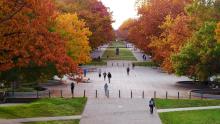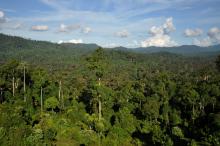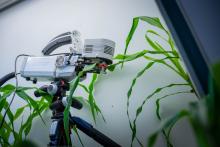Two University of British Columbia researchers are part of an international team recommending standards for the DNA barcoding of land plants, a step they hope will lead to a universal system for identifying species, and ultimately boost conservation efforts.
Barcodes based on portions of DNA – the taxonomical equivalent to UPC barcodes on products – have already emerged as a viable solution for uniquely identifying species in many animal groups. However, because DNA varies less between plant species, determining which portions of plant DNA to use as a unique identifier has been a thorny issue.
The research team, which included scientists from more than 20 institutions around the world, selected two genomic regions – genes referred to as rbcL and matK – as the best candidates from which to generate barcode data.
The study is published this week in the Proceedings of the National Academy of Sciences.
"It's a pragmatic first step in solving a complex issue," says UBC botanist and Associate Professor Sean Graham, who conducted research on the project and helped author the study. "We’ve selected areas of DNA that are available in the vast majority of plants, could easily and accurately be sequenced, and when combined, provide a near-unique signature for barcoding."
Limiting the barcode to information generated from two DNA sites should help cut costs associated with sequencing and retrieving the correct information.
The researchers used 400 land plant samples to test the two-site solution. In 72 per cent of cases they were immediately able to determine the correct species of plant, and in the rest of the cases were able to place the plant in a group of congeneric species.
"There's no doubt this will be refined in the future, but there is a need for a core barcoding standard now," says Graham, with the UBC Botanical Garden and Centre for Plant Research, and the Department of Botany. "Particular research projects with special needs could augment the system by adding a third DNA locus to their barcode if required."
Theoretically, any DNA barcoding standard would have to accommodate over 400,000 species of plants, and would be a key step toward establishing a central barcode database for taxonomy, agriculture and conservation.
The 2008 International Union for Conservation of Nature Red List categorized 8,457 out of an evaluated 12,055 species of plants as endangered, but notes only four per cent of total plant species have been evaluated. Those evaluations tend to focus on key areas losing biodiversity and plant families that are known to be endangered. Estimates of the total number of endangered plants vary from 13 per cent to 37 per cent.
Graham worked with UBC post-doctoral fellow Diana Percy on the project, and the international research team included scientists from the universities of Guelph and Toronto, along with scientists from the United Kingdom, the United States, Europe, South and Central America, South Africa and South Korea.
Musqueam First Nation land acknowledegement
We honour xwməθkwəy̓ əm (Musqueam) on whose ancestral, unceded territory UBC Vancouver is situated. UBC Science is committed to building meaningful relationships with Indigenous peoples so we can advance Reconciliation and ensure traditional ways of knowing enrich our teaching and research.
Learn more: Musqueam First Nation
Faculty of Science
Office of the Dean, Earth Sciences Building2178–2207 Main Mall
Vancouver, BC Canada
V6T 1Z4


